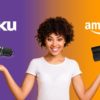If you’re looking to buy a new TV, you’ll probably come across terms like LED, QLED, and OLED. These are different types of displays that will affect the picture quality of your TV in different ways. To help you make the best decision, here’s everything you need to know about LED vs QLED vs OLED TVs, and which one is the best for your home theater setup.
What Is an LCD TV?
LCD TVs get their name from the “liquid crystal display” they use to control light. All LCD TVs have a light source at the back of the TV (known as a backlight). Sitting in front of this backlight are several filters that control how much light passes through, and which color each pixel should be.
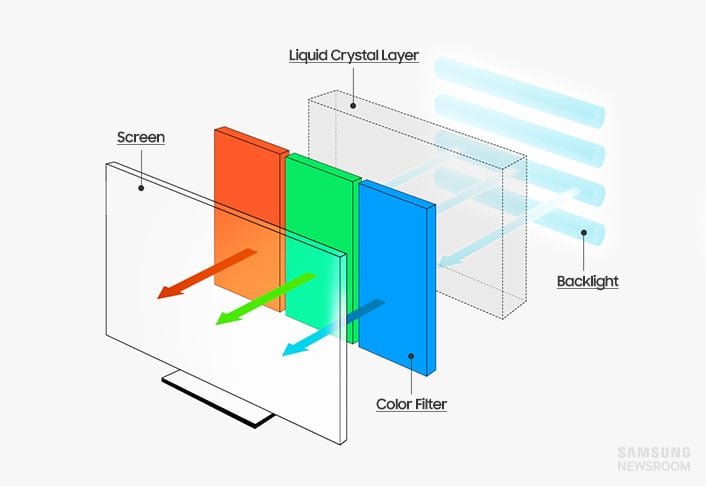
What Is an LED TV?
LED (light-emitting diode) TVs are simply a newer version of LCD TVs that use little LED lights as the backlight instead of old fluorescent tubes. Since these LED lights are much smaller, these types of displays can be thinner and provide better contrast than LCD TVs.
There are several types of LED backlights that will also affect a TV’s picture quality. Edge-lit TVs have LEDs along one or more sides, which can cause the image to be washed out. The newest LED TVs use a full array of small LED backlights to increase the amount of light.
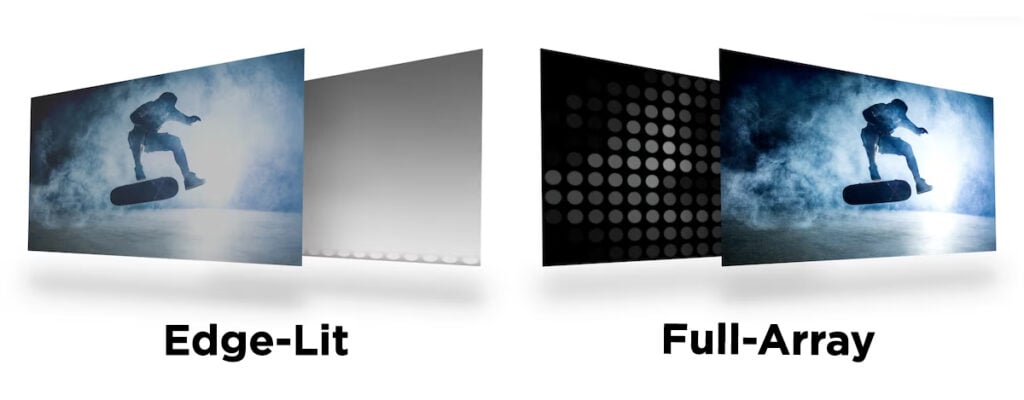
If you’re going to buy an LED TV these days, you should look for one that features “full-array local dimming.” This technology divides all the LED backlights into different “zones,” each of which can be controlled to keep the dark parts of an image dark and the light parts light. The more local dimming zones a TV has, the better the picture quality will be.
Read More: What is full-array local dimming?
What Is a Mini LED TV?
A mini LED TV is just an LED TV, except it uses much smaller LEDs for backlighting. With more lights, these TVs are able to produce brighter images with better contrast. Mini LEDs also reduce blooming, or when light bleeds from the brighter parts of an image to the darker parts.
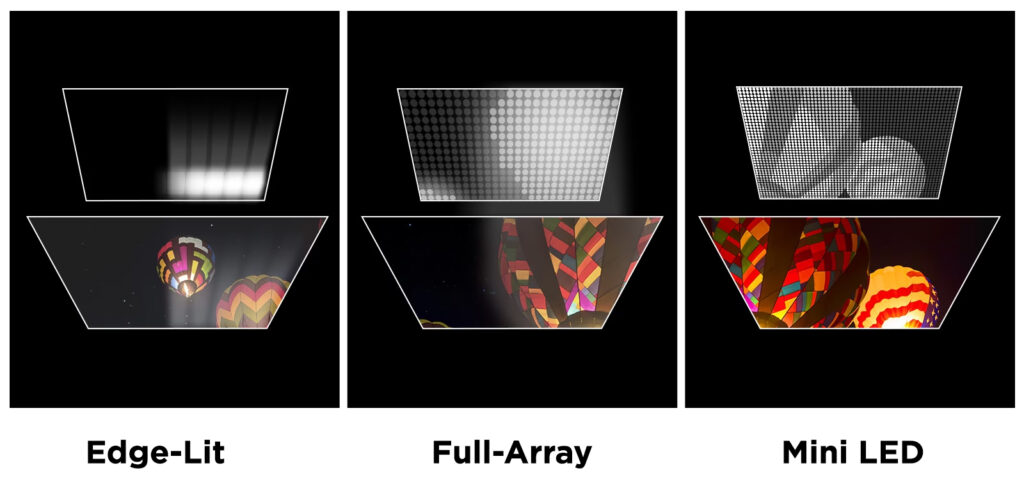
What Is a QLED TV?
A QLED TV is a type of LED TV that has an extra quantum-dot layer between the backlight and the LCD panel. When light hits these microscopic quantum dots, it produces brighter colors that are more heavily saturated than traditional LED TVs.
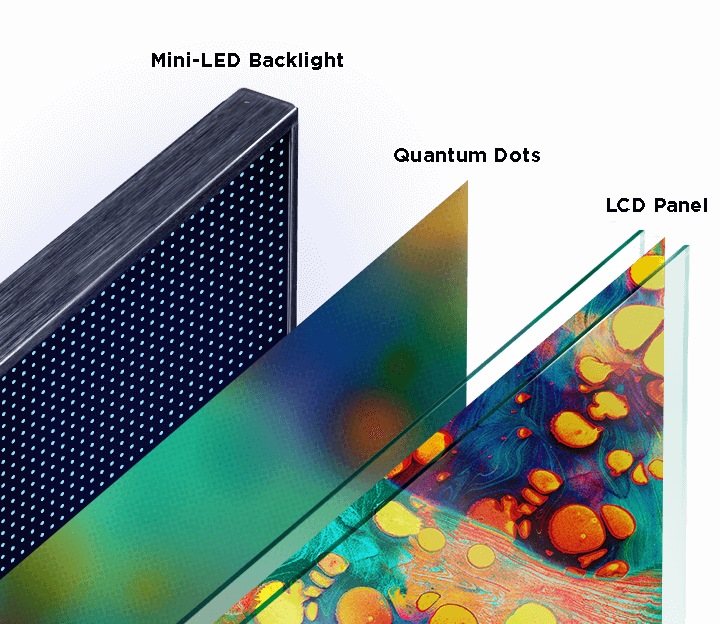
What Is an OLED TV?
An OLED (organic light-emitting diode) TV is totally different from regular LED TVs because it doesn’t use backlights at all. Instead, OLED TVs have self-lighting pixels that are all individually controlled. This gives OLED displays the best image quality, but they don’t get nearly as bright as LED TVs.
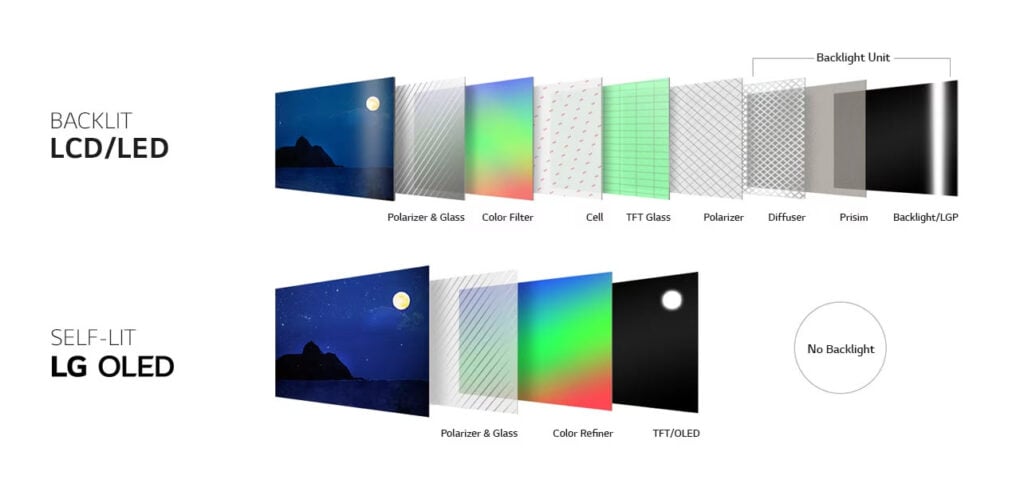
Which Type of TV Should You Get?
The most important thing when choosing between LED, QLED, and OLED TVs comes down to how bright your room is. In a brightly lit room, you should get an LED or QLED TV. If you watch TV in a darker room, OLED TVs will be better for contrast, motion, viewing angles, and more.
Brightness: LED vs QLED vs OLED
LED TVs have powerful backlights that make them about twice as bright as OLED TVs. But, if you want the brightest TV, you should get a QLED TV because the quantum dot filter will also boost the light output of colors compared to regular LED TVs.
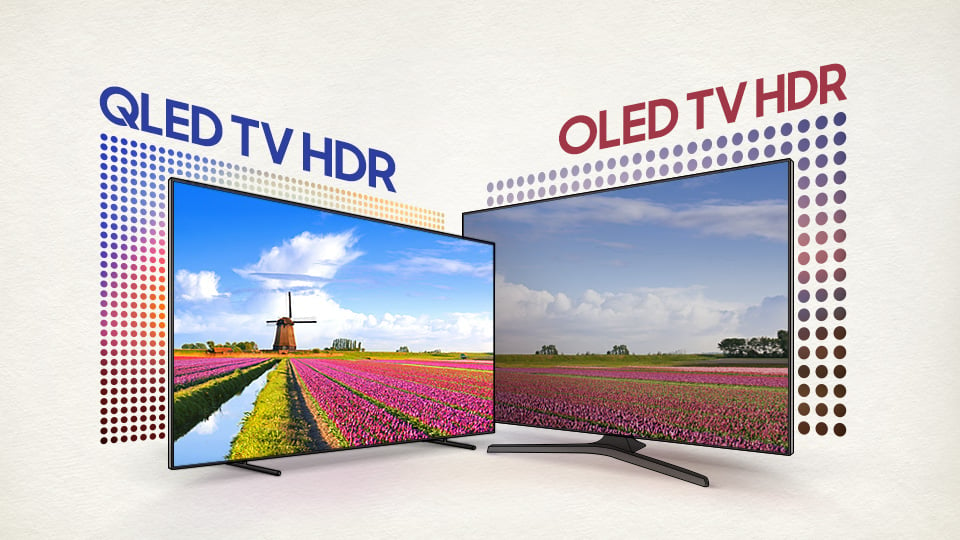
The brightness of TVs, smartphones, and other digital screens is measured in “nits.” OLED TVs usually have a peak brightness of around 500-800 nits, while LED TVs have a peak brightness of 1,000-2,000 nits, and QLED TVs can get up to 4,000 nits.
While it is true that OLED TVs produce the best image quality, the screen can also appear dull and washed out in a brightly lit room. In that case, you will probably be able to see more details with an LED pr QLED TV. So, if your home theater has lots of windows and natural light, you might want to avoid OLED for that space.
However, OLED TVs are getting brighter and brighter these days. So, if you really care about picture quality, OLED might still be the best choice for you. Just make sure you get an OLED TV with a peak brightness close to 1,000 nits or higher.
Winner: QLED
Contrast: LED vs QLED vs OLED
Each pixel in an OLED TV can be controlled individually, which means the darkest parts of the screen can actually be turned off completely. This means OLED can produce “pure blacks” and a “perfect contrast ratio” that you won’t get with almost any other type of display.
A contrast ratio measures the difference between the darkest parts of an image and the lightest parts. Since OLED TVs can produce pure blacks, they provide a nearly infinite contrast ratio. That means you’ll see more detail in the image, and colors will appear more vivid and accurate.
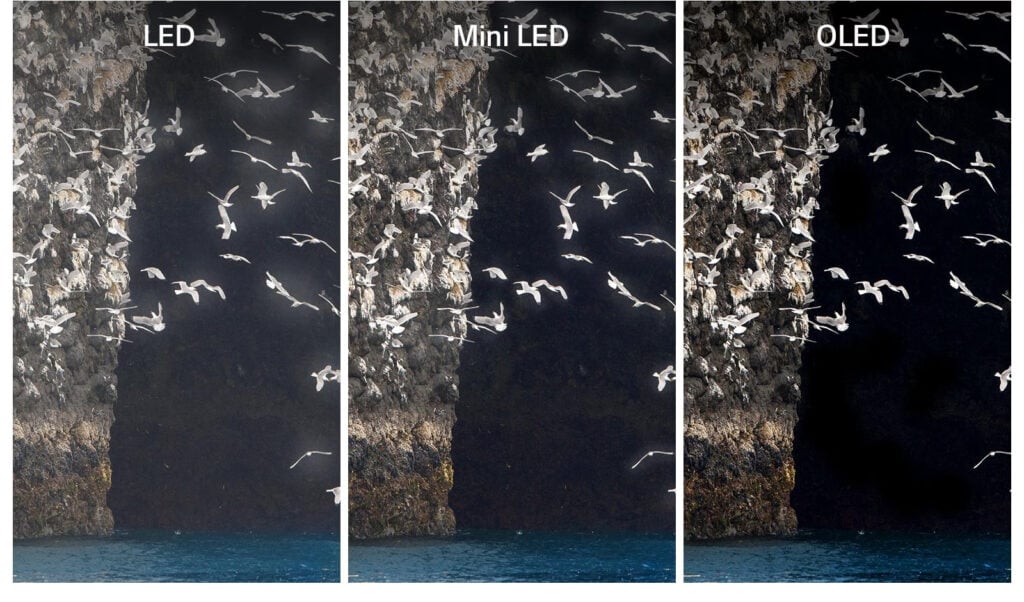
On the other hand, LED and QLED TVs both use strong backlights, and the LCD filters are not able to block 100% of the light. So, LED displays usually have a much lower contrast ratio, which can make the image look washed out. However, you can combat this by getting an LED TV with lots of local dimming zones.
Winner: OLED
Color: LED vs QLED vs OLED
Since they can get so much brighter, QLED TVs can display a much wider range of color brightness than OLED TVs. And, with quantum-dot technology, QLED TVs can display a wider range of colors than regular LED TVs.
In fact, Samsung claims that it released the first QLED TV with 100% color volume all the way back in 2017.

While OLED TVs can now display the same wide range of colors, they can’t display those colors as brightly, especially when it comes to HDR content.
Read More: What is HDR?
Winner: QLED
Response Time: LED vs QLED vs OLED
TVs with a fast response time will display less motion blur when you’re watching fast action scenes and sports. Since OLED TVs can change each pixel on the screen almost instantaneously, they almost always have a better response time and less motion blur than LED TVs.
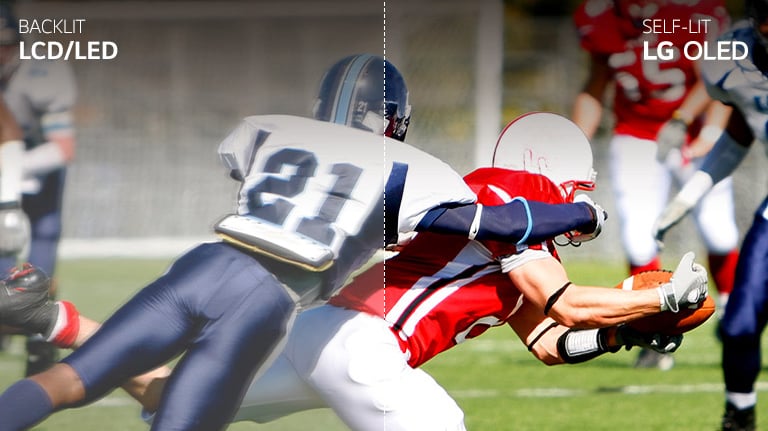
Winner: OLED
Viewing Angle: LED vs QLED vs OLED
If you have lots of people watching your TV at the same time, it’s very important to take viewing angles into account. Since the self-lit pixels in an OLED TV emit light in all directions, they deliver more accurate light and color than LED TVs when viewed at an angle.

Winner: OLED
Image Retention: LED vs QLED vs OLED
One of the biggest downsides to an OLED TV is image retention. That means static images (like logos on news channels) can “burn” into the screen over time, leaving a permanent ghostly mark behind.

Image retention isn’t as common of a problem these days, unless you watch the same programs on repeat or you leave the TV on pause for a long period of time. However, if you are worried about image retention, and you want to avoid it altogether, you should get an LED TV instead.
Winner: QLED / LED
Cost: LED vs QLED vs OLED
Generally, OLED TVs are much more expensive than LED TVs, but they also provide the best picture quality. QLED TVs are usually a little more expensive than LED TVs, but they probably offer the best value for your money.
Winner: LED
Read More: When is the best time to buy a TV?
HelloTech editors choose the products and services we write about. When you buy through our links, we may earn a commission.


